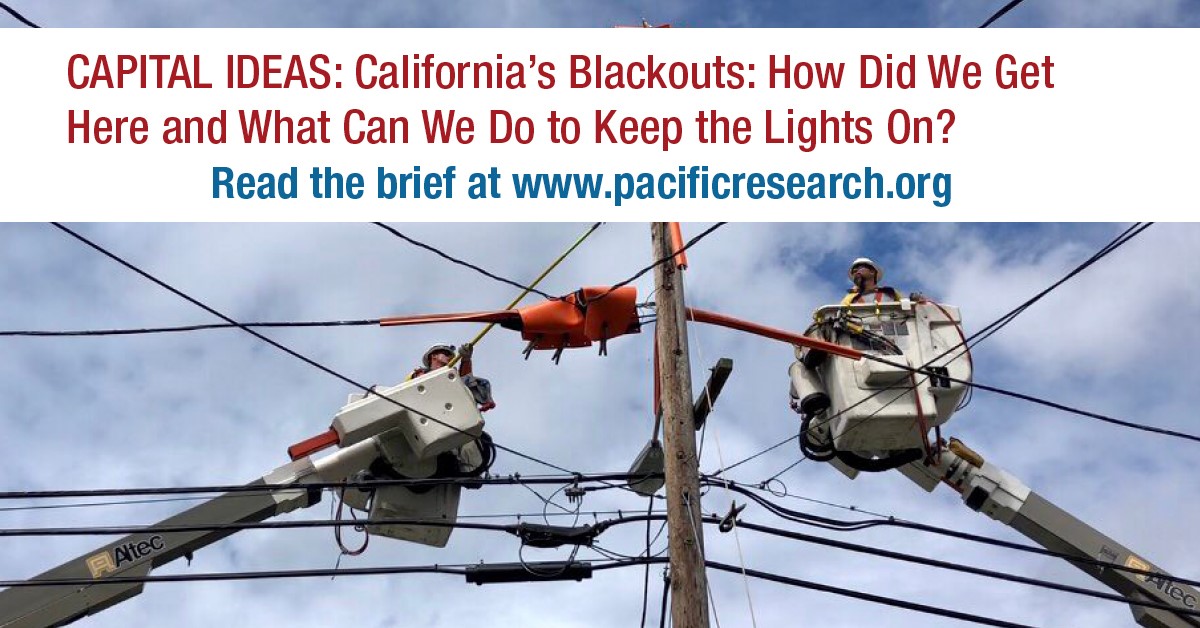Introduction
Pacific Gas and Electric of San Francisco began in October 2019 a series of electricity blackouts called “public safety power shutoffs.” The objective was to prevent its equipment from starting wildfires during hot, dry, and windy periods.
The Great Blackouts of 2019 plunged nearly 3 million into darkness at its peak. With memories of former Gov. Gray Davis being recalled over his inept handling of California’s 2001 power crisis fresh in their minds, Gov. Gavin Newsom and state lawmakers worked overtime to avoid meeting the same fate at the hands of an angry public.
The state’s political class quickly played a game of political hot potato, blaming PG&E and others for the blackouts, while positioning themselves as having the best solution to prevent future blackouts moving forward.
The state’s plunge into darkness, which reminds one of going back to Medieval times, begs the following questions. How did we get to a place where the lights went out for nearly 3 million people? What can we do to ensure the lights stay on in the future?
This report provides a historical perspective, outlines the state’s system for delivering electricity, and examines the policy decisions that have contributed to the ongoing wildfire disaster. Then, it provides an overview and brief analysis of several different ideas that have been put forward by lawmakers to hopefully prevent future blackouts.


